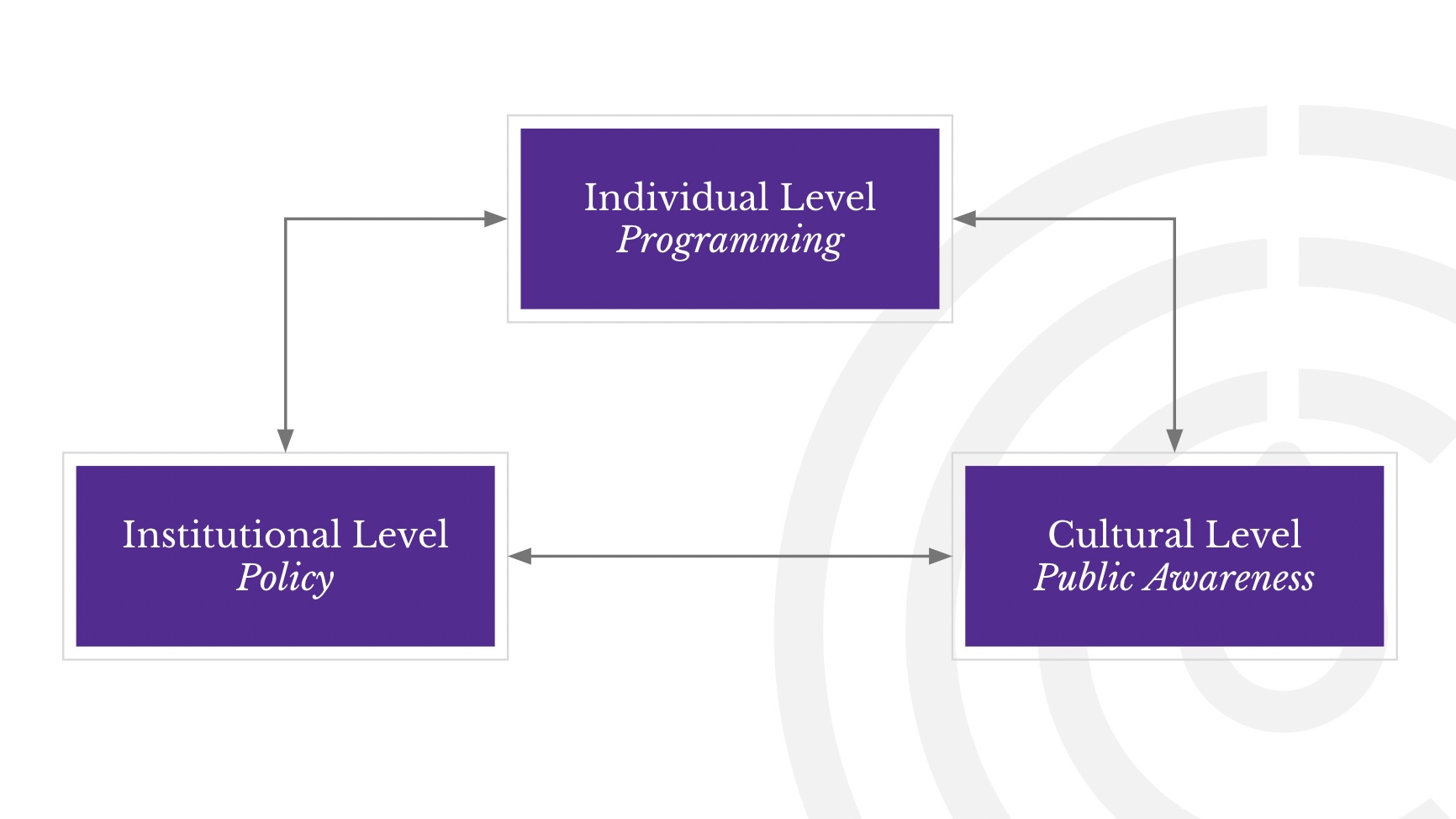What We Do
From Charity to Change helps current and future social change agents understand and apply systems change strategies to redress the root causes of complex problems for sustainable change at scale.
Why we do it
Few social change agents, be they nonprofit leaders, philanthropists, board members, or activists, would choose to alleviate the symptoms of inequity rather than address its root causes, much less perpetuate a problem if they could solve it. Yet, without the requisite knowledge, resources, and support, too many unintentionally do. The social service agency focused on program delivery, the policy organization that advances legislation, or the activist who raises awareness of an issue—each has an important, positive impact, but together could achieve much more.
“Systems change” means different things to different people. It’s often defined by characteristics—like broad, deep, complex, and collective, or by a set of strategies—a mix of research, evaluation, network building, and policy advocacy. To clarify what systems change is and how to pursue it, we need to connect these strategies and characteristics back to the root causes they address, to distill systems change into a practical framework, commonly understood and applied.
How we do it
A Social Justice Framework for Systems Change
From Charity for Change uses a social justice framework for systems change planning to help you identify the root causes of the problem you’re trying to solve, and strategies to solve them. Because our approach is grounded in theory and 20 years of practice, we balance guidance on clarifying vision with a focus on how to operationalize it—to make the aspirational actionable.
Why use a social justice framework?
Social justice is defined as an equitable distribution of resources and recognition among social groups, which provides an equitable capacity for shaping society to meet one’s own needs. This is a utopian goal, by nature theoretical, but it implies a process, not just an endpoint, which is what makes social justice an actionable framework for developing systems change plans.
Centering those proximate to a problem
To begin with, we can’t get to a place where groups shape society to meet their own needs by imposing a conception of what those needs are and how to address them. Thus, the importance of centering those directly impacted by an issue, or deeply connected to those who are. It may be that those proximate to a problem don’t initiate systems change, but they must be elevated in the planning process and empowered through implementation, in order to achieve sustainable change.
Identifying root causes of systemic inequity
Social justice principles hold that inequity manifests at three, mutually reinforcing levels:
- At the individual level, where people internalize oppressive or dominant attitudes; they have a certain perception of themselves, what they can do, and how they’re valued,
- At the institutional level, where groups are treated inequitably, be it access to or benefit from institutions, and
- At the cultural level, where biased attitudes and behavior pervade in relation to certain groups
Identifying strategies to address root causes
These different, but interrelated root causes require different, but aligned strategies:
- Programmatic, to shift individual mindsets, including perception of self in relation to others,
- Policy change, to address inequity within and between institutions, and
- Public awareness, to change societal attitudes and behaviors.
Just as inequity at one level reinforces the other, each type of strategy must be designed and evaluated to reinforce the other. For instance, a program might generate quantitative evidence, or qualitative stories of impact, that shifts public opinion in support of a policy that funds or otherwise enables more programming; or a public awareness campaign might be designed to encourage program participation, which builds the capacity of those directly impacted to change policy—the key is to align strategies in a positive feedback loop.

A social justice framework for systems change can apply no matter the issue or context. For more on our approach, and a set of generative questions to begin your planning process, see “Systems Change: Making the Aspirational Actionable,” authored by the founder of From Charity to Change, in the Stanford Social Innovation Review.
